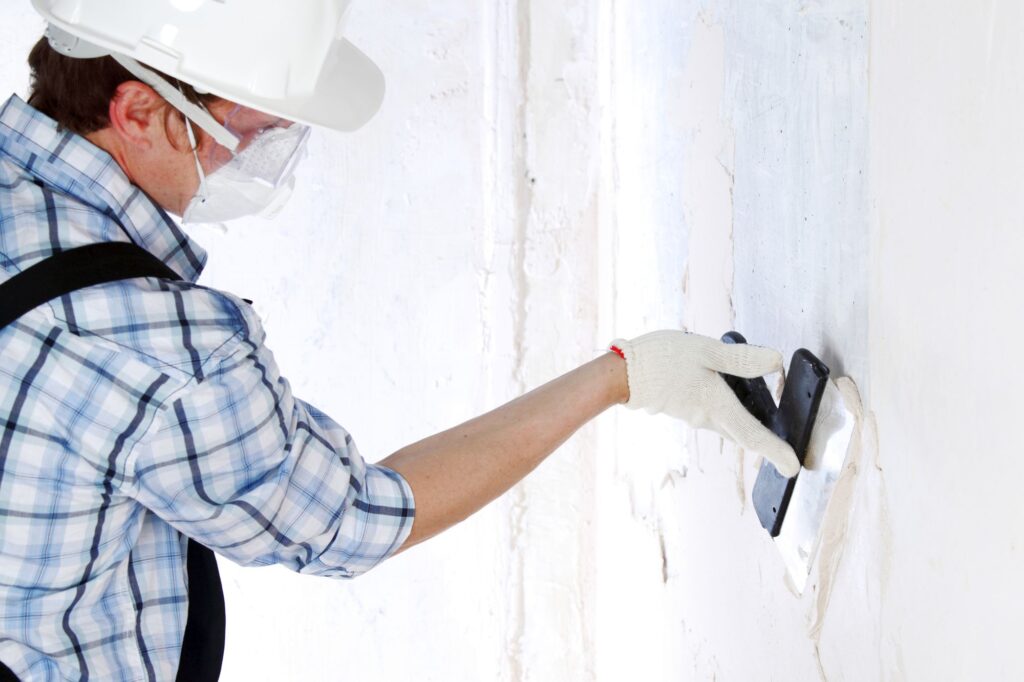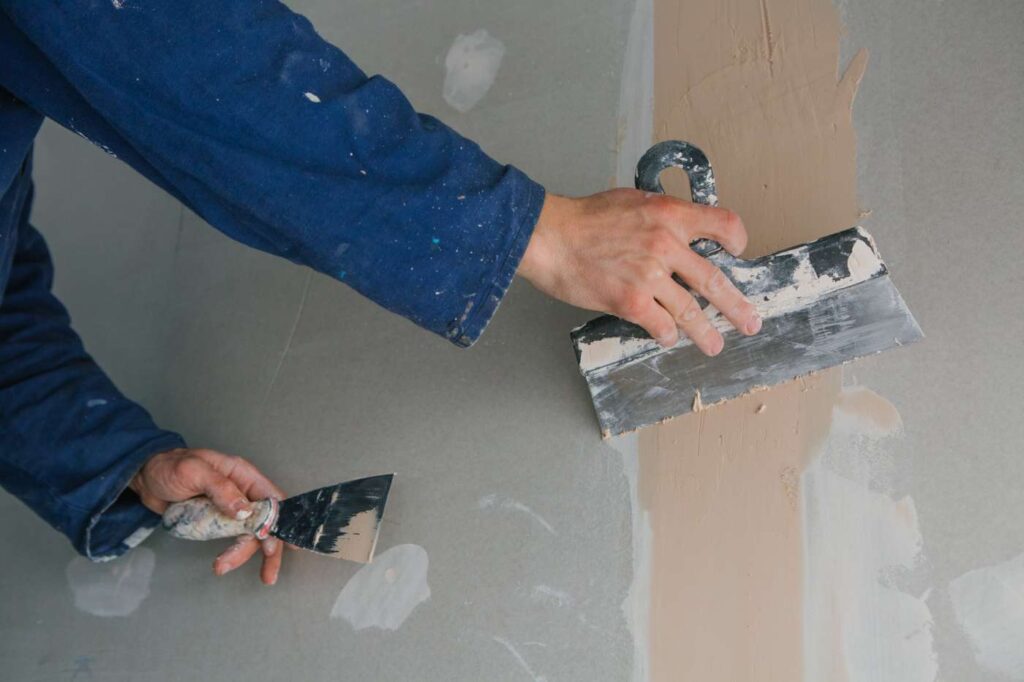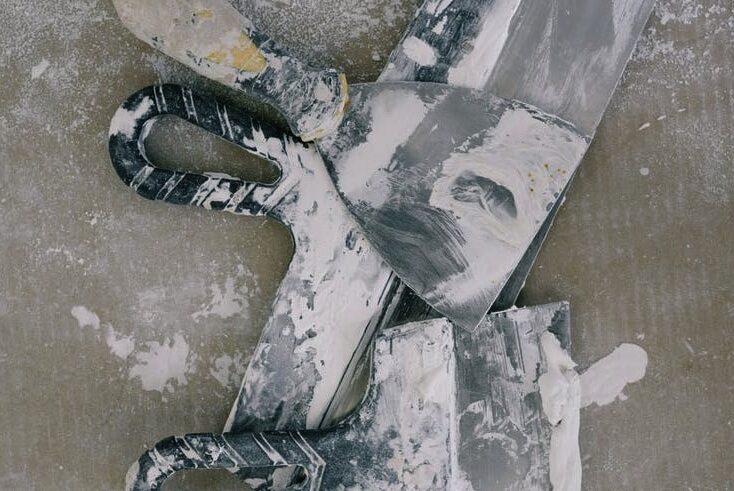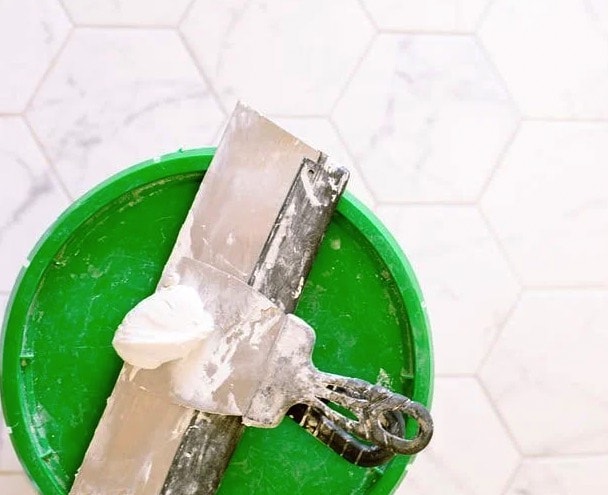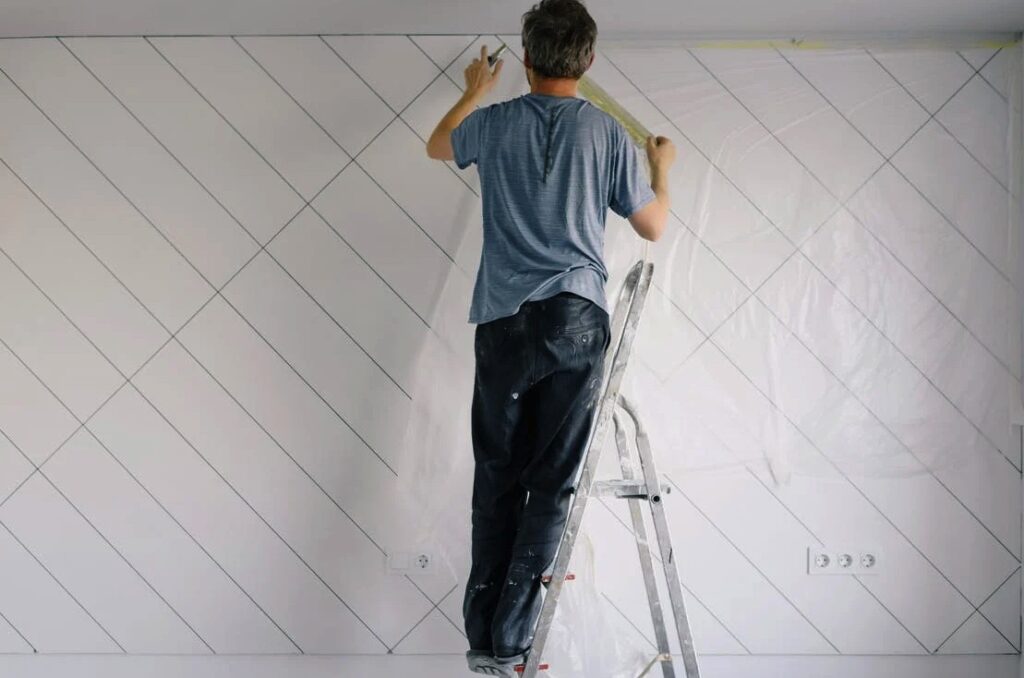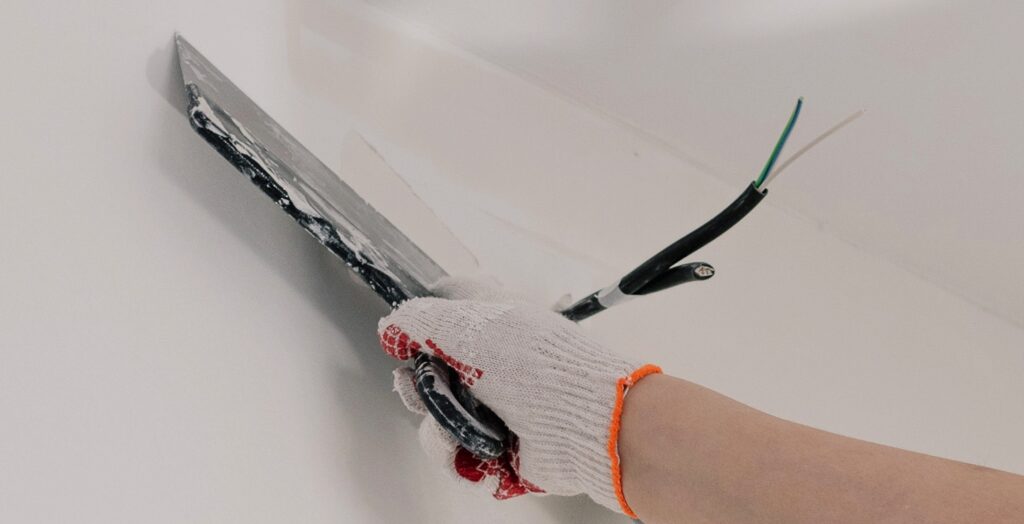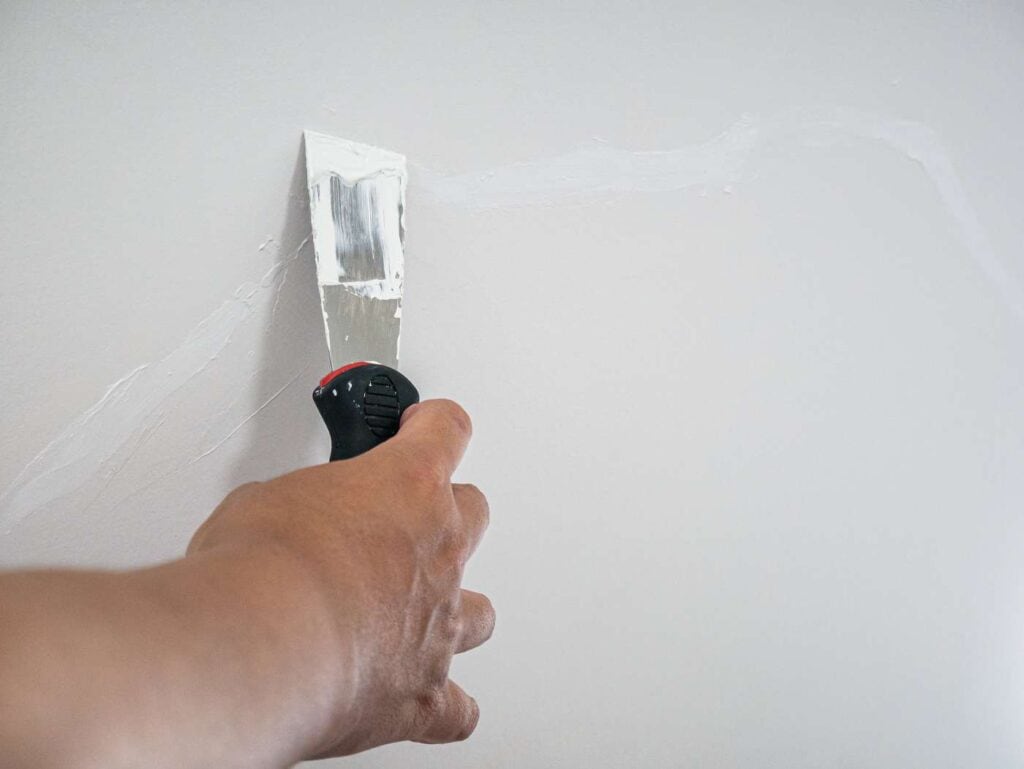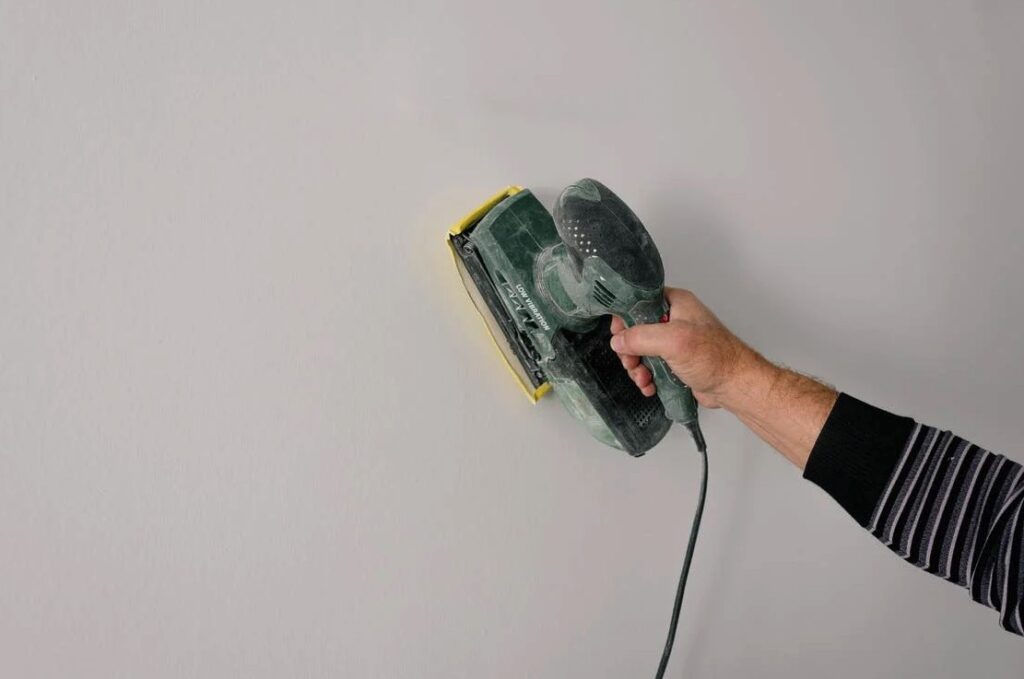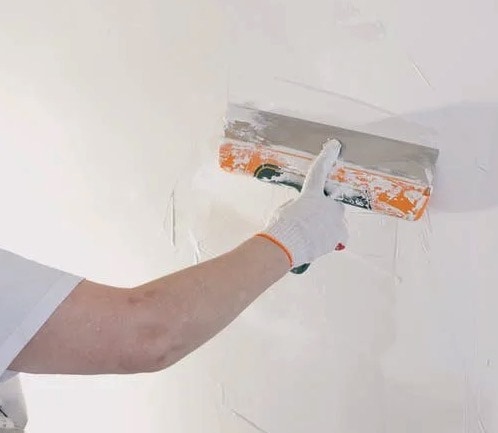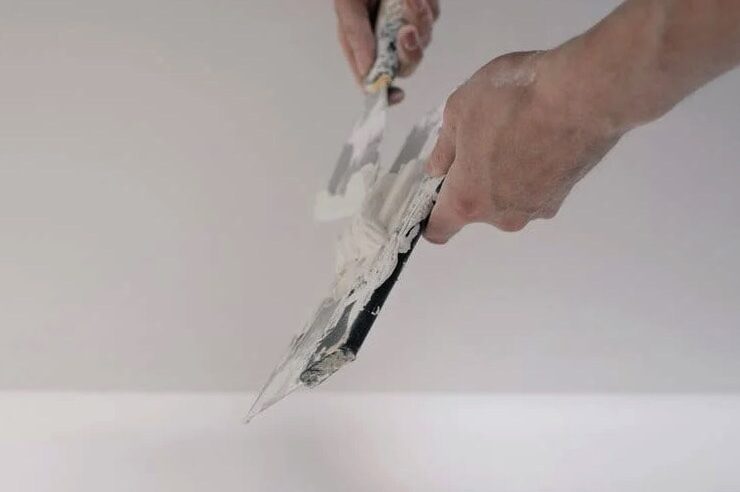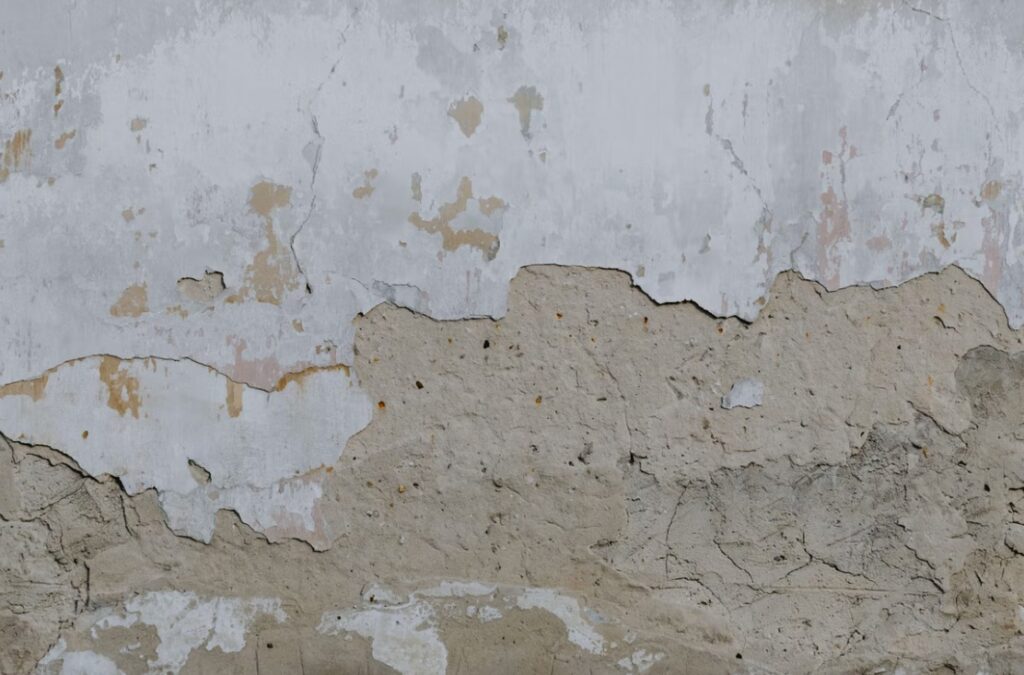It's always useful to know how to paint on fresh plaster, so make the effort to learn. It's possible that you've had a wall in your home re-plastered or constructed an entirely new structure from scratch.
There is more to do before painting over freshly plastered walls. Despite the smooth quality that fresh plaster provides to walls and ceilings, painting directly onto it can cause issues that result in paint not adhering and flaking off.
To prevent paint from cracking and peeling, plaster must be totally dry before it is painted.
The plaster or drywall must be totally dry before being painted over. For new construction, like new plaster, diluting the first layer, known as the mist coat, is crucial because it allows the paint to soak into the surface and attach to it.
Check out our comprehensive guide to learn everything you need to know about painting on freshly plastered walls, from what to look out for to how to achieve the best results.
Fresh Plaster Painting

It would be helpful if someone could offer some guidance on how to paint over freshly plastered walls. Once a room has been replastered or a new wall has been built, it can be difficult to decide how to decorate it.
Plaster walls need to be prepared and painted in a different way than existing walls.
It requires more forethought and patience.
DIY room painting is one of the easiest, cheapest, and most noticeable improvements you can make to a space. Newly laid plaster requires special treatment when painting.
Learn the quirks of fresh plaster and whether or not it needs to be primed to get a finished look that can pass for professional.
Adding a mist layer of paint is just one of the stages that needs to be taken before the final coat of the desired colour can be applied. You'll be relieved to hear that all you need to know is right here.
To what extent do new plaster walls require special equipment for painting?
- Tools including paint and high-quality rollers
- To paint with, you'll need: a little brush and some disposable plastic sleeves
- Sticky tape for masking
- Stepladder\sWater\sGloves
- Paint with emulsion
When Is It Appropriate to Paint Over New Plaster?
You can't paint over freshly plastered walls. Plaster needs four to six weeks to dry entirely after it's been applied.
Plaster is very absorbent, therefore any liquids that come into contact with freshly plastered walls will be absorbed rapidly. You can't paint over wet plaster because the paint will peel off.
The current state of affairs is less than ideal. It's best to wait a while before painting over freshly plastered walls.
First, ensure the plaster has dried thoroughly
You must wait until the plaster is completely dry before painting plaster walls for the first time; otherwise, the paint will flake as the moisture tries to escape from under the paint.
When you can paint over newly plastered walls or ceilings depends on a variety of factors, such as the weather, the type of plaster used, the thickness of the application, and whether or not the underlying surface is brick or plasterboard.
It's best to wait at least a week, and preferably three to four weeks, before painting freshly skimmed walls.
- It is important to have a stable, dry, and clean surface.
- Wait for the plaster to fully dry. The final result will be a colourless, homogenous surface after drying. This could take as long as a week, depending on the weather.
- Any gaps that could be compromised by movement should be caulked with an elastomeric acrylic caulk.
A Mist Coat
To put it another way, a mist coat is just a very light layer of paint.
A mist coat is applied before the final coats of paint so that they can bond with the plaster and create a smooth, homogeneous surface.
You can also use water-based matt emulsions or water-thinned paints. Be sure to dilute the plaster as directed on the can so that it may soak in and stabilise properly.
If you don't add the extra water, the paint will pull the moisture out of you, causing cracks in the finished product.
Step Three: Prep the Walls with a Mist Coat
Applying a mist coat is the first step in painting newly plastered walls. Do this before painting over freshly plastered walls for the greatest effects.
Mist coat, which is used as a sealant before painting, is nothing more than watered-down emulsion that is sloshed all over the walls. Making a mist coat requires combining an emulsion with water until a milky liquid results.
Walls that have just been plastered are beautiful, even when they are dry and dusty.
Mist coat, due to its great fluidity, will permeate newly plastered walls, sealing them so that they can be painted.
Making the mist coat is easy and inexpensive because all you need is white emulsion. We purchased a large quantity of this white emulsion because it is both economical and effective. In our house, it serves as a mist coat, a base coat, and wherever else that we wish to keep white.
Allow the Mist Coat to Dry Allow the Mist Coat to Dry
To dry a thin coat typically takes 24 hours, but this time might go up or down depending on the relative humidity and temperature of the room. Once the surface is dry, you may start adding the finishing touches.
You Should Not Have Issues With Your White Topcoat
Applying a white top coat of paint to freshly plastered walls can be challenging since it often requires numerous coats to cover the surface properly and can often emerge in areas.
If you find any bumps or divots, you can even them out with a solid stain block of paint or a solid foundation coat of emulsion.
Applying a base coat or stain blocker first can save you time and money if your walls are spotted.
The Finishing Touches Must Be Applied
Assuming you're a rightie, you should start at the top left corner of the wall and work your way clockwise. If you're left-handed, you should go against the grain and finish your work upside down.
That manner, your favourite pair of decorating overalls will be safe from harm.
Trim and corners require brushwork, but the rest of the wall can be rolled.
In addition, the second application shouldn't be made until the first one has dried fully (ideally, overnight).
Interior:
- You should use one coat of the Colortrend Interior Matt paint of your choice.
- In 30-60 minutes, you'll be able to touch the dry floor again.
- In four to six hours, the coating can be applied again.
- You can apply it using a brush, roller, or spray.
- Apply another coat of Colourtrend Interior Matt paint to complete the job.
- If it's possible, put off drying for a while.
- in the tone you like most.
Exterior:
- You can apply it using a brush, roller, or spray.
- In 30-60 minutes, you'll be able to touch the dry floor again.
- Apply another coat of your chosen Colortrend Weather colour.
- In four to six hours, the coating can be applied again.
- Apply one coat of the ColorTrend Weather shade you like best.
- If it's possible, put off drying for a while.
Be Wary of the Humidity
When moisture seeps through the walls, it can be impossible for fresh plaster to dry no matter how long you wait.
Common methods involve removing the plaster all the way down to the brickwork (i.e., the wet areas) and then having the plasterer apply a render mix (also called tanking) to the area behind the plaster.
The compositions used for rendering and tanking are fundamentally different. If you apply render mixtures to the brickwork first, the new plaster should dry out regularly without any wetness.
If the source of the dampness isn't treated, it can cause more problems.
Frequently Asked Questions About Plaster
You don't need any special or expensive products to paint new plaster. The best primer for new plaster is a mist coat that you can easily mix yourself.
A mist coat is thinned down emulsion that you use to prime newly plastered walls. You mix some emulsion paint with water to make a mist coat. We mix about one part of water with one part of paint until we end up with a liquid that resembles milk or cream.
Ideally, plaster needs to be fully dry before painting. Fresh plaster will take around 4-6 weeks to dry fully. Fresh plaster is porous and will therefore absorb moisture. If you attempt to paint over plaster that is still damp, the paint is likely to peel off.
In short, it's rarely necessary to apply two mist coats of sealer, but it will not harm the surface either. However, applying a second mist coat is a good idea to go down the "belt and braces" route.
Leave the window open to allow the room to dry out a little more overnight.
How Soon Can I Paint Over New Plaster?
You might have painted over freshly plastered walls before they were completely dry. If this is the case, it may have already started to peel. Due to continued evaporation, water from the plaster has become "stuck" between the plaster and the paint.
Unfortunately, if you wish to avoid this issue, you will need to scrape off the new paint. A paint scraper is ideal for this task.
Thinning the first coat of paint is necessary for a smooth finish.
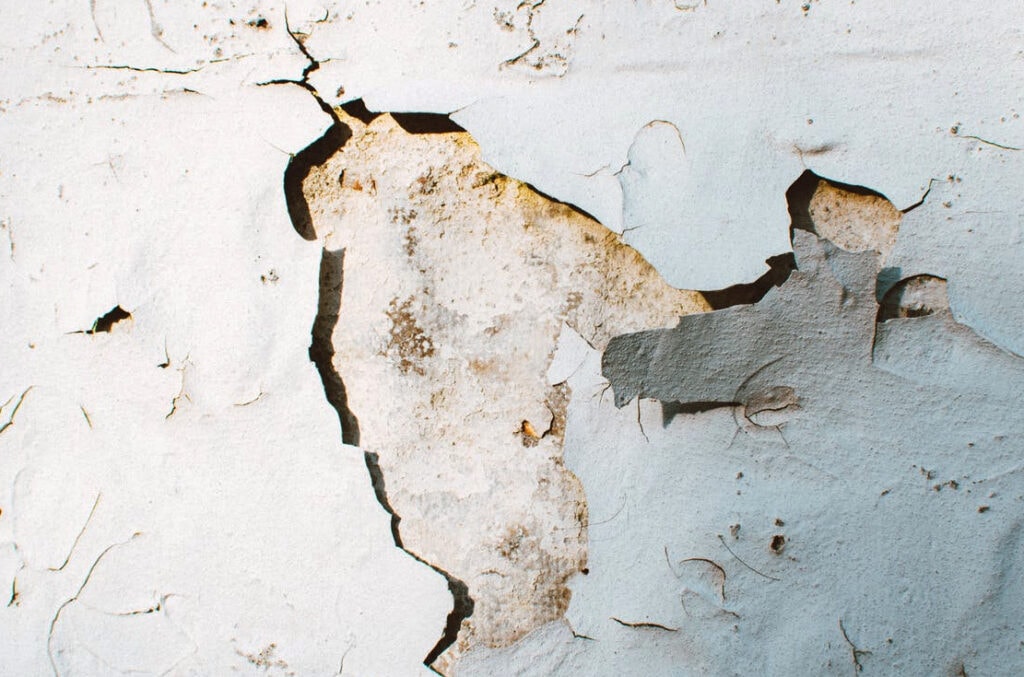
Do You Need to Seal the Plaster After It Dries?
Plastering a wall is just the first step; it may not be finished until long after the plaster has dried.
No matter how neatly a wall is plastered, it will always have some minor defects visible at first glance. As plaster dries, dust may settle on the finished product. For this reason, many experts advise "sealing" a wall prior to painting it. Several methods exist for accomplishing this goal.
Initially, you may try combining white PVA glue and water in a 1:3 ratio. Use a paintbrush to spread the solution throughout the wall, and then wait for it to dry. Use the least expensive white emulsion you can find and wet it down to save money.
Apply the compound to the wall in the form of an emulsion. Often called a "mist coat," this is a common step in the application of new plaster and serves the purpose of drawing attention to any flaws or unevenness in the surface. Before applying the final coat of emulsion, walls must be sanded or filled.
Is sanding new plaster required prior to painting?
Assume, for the sake of argument, that you actually did engage a professional plasterer, which is highly doubtful. The consistency should be uniform and smooth as silk. Whether you've done your own plastering or noticed some bumps and divots (from PVA or plaster splashes, for example), sanding them down will ensure they don't show through the paint.
Too much sanding will result in a slick sheen, which will prevent paint from sticking.
Can Fresh Plaster Be Painted Upon?
It's not a good idea to paint directly onto freshly plastered walls without first priming them. A smooth foundation coat can be made with watered-down emulsion. Also, you can find paints that work well on new plaster.
As the paint dries, it forms a waterproof cover over the moist plaster.
You can delay the plaster's drying time by doing this, as less water will evaporate. Extra moisture in your wall may cause serious dampness problems.
Salts in bricks can be dissolved by water, which can lead to structural deterioration if the wall is not regularly maintained.
The simplest and most time-efficient method of checking whether or not your walls are dry is to simply wait.
When finishing a new plaster wall, is a coat of pva necessary for protection?
In fact, you should stay far away from your PVA. Since PVA isn't necessary when misting freshly plastered walls, that's one less thing to worry about. Due to chemical incompatibilities between PVA and paint, sealing pores and creating a weak layer is the result of painting PVA (or diluted PVA) onto new plaster.
The effectiveness of the mist coat is based on its having the same qualities as the topcoats. A lack of adequate adhesion between the newly applied paint layer and the PVA/plaster increases the likelihood of cracking and peeling.
Choosing a Color of Paint
Think about your budget, because you get what you pay for with paint. It will take more applications of low-quality paint to provide the same coverage as one coat of higher-quality paint, and the cheaper paint won't last as long. Quality paint, on the other hand, needs fewer coats, lasts longer, and increases durability and aesthetic appeal.
It's crucial to use a paint that allows moisture vapour to escape when painting over freshly plastered walls. Lime plaster acts like a sponge, soaking up moisture from the air, thus proper ventilation is essential.
Most modern paints build a skin on the wall that inhibits the wall from absorbing moisture; this is why the paint bubbles, cracks, and flakes when applied to a wall built of lime plaster.
If you want to paint over lime plastered walls with modern paint, you'll need to remove the old paint first and then apply a coating that allows moisture vapour to escape, like lime paint.
Lime plaster is commonly used as a decorative coating on older buildings.
Can you tell me what I should do if the paint on my new plaster begins to crack or peel?
The first step is to ascertain if the issue is confined to one section of the room or if it affects the entire space. A minor moist area or pollutant on the wall could be the cause of a response in the paint topcoat if the issue is localised. Take a broken piece and look at it carefully.
It looks like you can see right through the plaster into the room behind you. If the mist coat sticks to the back of the colour you used for the topcoat, there may be an issue with the topcoat's adherence. The problem can be fixed by sanding the area down to the plaster and then applying a second coat of plaster after the first has dried.
If the entire room is peeling or cracking, the situation is more dire. Instead of letting the excess paint go to waste, use it to touch up an undetectable area on another wall. If two coats of paint don't improve the appearance of this area, then the paint is probably not the issue.
There are a few potential explanations for this, including wet plaster that wasn't prepped for painting, an undiluted mist coat, or the use of PVA.
Sanding down to the plaster may be necessary if the surface has been damaged. There will be flaking even if you keep painting. To avoid this annoyance, you will need a suitable mist coat and to plan ahead.
What Can Happen if the Mist Layer Is Too Thick?
Having a mist coat that is too thick can prevent it from penetrating the new plaster. If you'd rather not make your own plaster sealer out of emulsion paint and water, you can always buy one instead and test it out on a small area to see if it has this issue.
To avoid settling, a consistency just a little bit thinner than single cream is ideal. If it collects on top and seems too thick, you may want to add additional 50 percent water.
Conclusion
Painting newly poured plaster is different. Before painting, the plaster must be dry. Then, to penetrate the surface, the mist coat of paint must be diluted. Painting after plastering depends on many factors, including the plaster's kind and thickness. Slopping watered-down emulsion on walls seals them before painting.
Walkable floors dry in 30–60 minutes. A thin coat normally dries in 24 hours, depending on room humidity and temperature. Base coats or stain blockers can save time and money on stained walls. Moisture in walls may prevent the plaster from drying. Plasterers apply a render mixture after stripping the plaster to the brickwork.
Tanking differs from rendering. Smooth surfaces won't hold paint. Diluted emulsion makes a smooth base layer. High-quality paint lasts longer and improves durability and aesthetics with fewer coats. Walls may peel or split due to paint topcoat issues.
Content Summary
- Knowing how to paint on fresh plaster is always useful, so try to learn.
- There is more to do before painting over freshly plastered walls.
- The plaster must be dry before it is painted to prevent paint from cracking and peeling.
- The plaster or drywall must be dry before being painted over.
- Check out our comprehensive guide to learn everything you need to know about painting on freshly plastered walls, from what to look out for to how to achieve the best results.
- Plaster walls need to be prepared and painted differently than existing walls.
- DIY room painting is one of the easiest, cheapest, and most noticeable improvements you can make to a space.
- Learn the quirks of fresh plaster and whether or not it needs to be primed to get a finished look that can pass for professionals.
- Plaster needs four to six weeks to dry entirely after its application.
- It's best to wait a while before painting over freshly plastered walls.
- To put it another way, a mist coat is a very light layer of paint.
- A mist coat is applied before the final coats of paint so that they can bond with the plaster and create a smooth, homogeneous surface.
- Applying a mist coat is the first step in painting newly plastered walls.
- Making a mist coat requires combining an emulsion with water until milky liquid results.
- Making the mist coat is easy and inexpensive because all you need is a white emulsion.
- In our house, it serves as a mist coat, a base coat, and wherever else that we wish to keep white.
- Applying a white topcoat of paint to freshly plastered walls can be challenging since it often requires numerous coats to cover the surface properly and can often emerge in areas.
- Applying a base coat or stain blocker first can save you time and money if your walls are spotted.
- Apply another coat of Colortrend Interior Matt paint to complete the job. In the tone you like most.
- Apply another coat of your chosen Colortrend Weather colour.
- Common methods involve removing the plaster from the brickwork (i.e., the wet areas) and then having the plasterer apply a render mix (also called tanking) to the area behind the plaster.
- Apply the compound to the wall in the form of an emulsion.
- A smooth foundation coat can be made with watered-down emulsion.
- Also, you can find paints that work well on new plaster.
- As the paint dries, it forms a waterproof cover over the moist plaster.
- You can delay the plaster's drying time by doing this, as less water will evaporate.
- Extra moisture in your wall may cause serious dampness problems.
- The simplest and most time-efficient method of checking whether or not your walls are dry is to wait.
- The effectiveness of the mist coat is based on it having the same qualities as the topcoats.
- A lack of adequate adhesion between the newly applied paint layer and the PVA/plaster increases the likelihood of cracking and peeling.
- Think about your budget because you get what you pay for with paint.
- It's crucial to use paint that allows moisture vapour to escape when painting over freshly plastered walls.
- The first step is to ascertain if the issue is confined to one section of the room or if it affects the entire space.
- A minor moist area or pollutant on the wall could cause a response in the paint topcoat if the issue is localised.
- You can see right through the plaster into the room behind you.
- If the mist coat sticks to the back of the colour you used for the topcoat, there may be an issue with the topcoat's adherence.
- The problem can be fixed by sanding the area down to the plaster and then applying a second coat of plaster after the first has dried.
- If two coats of paint don't improve the appearance of this area, then the paint is probably not the issue.
- You will need a suitable mist coat and plan to avoid this annoyance.
- Having a mist coat that is too thick can prevent it from penetrating the new plaster.
- If you'd rather not make your plaster sealer out of emulsion paint and water, you can always buy one instead and test it out on a small area to see if it has this issue.
